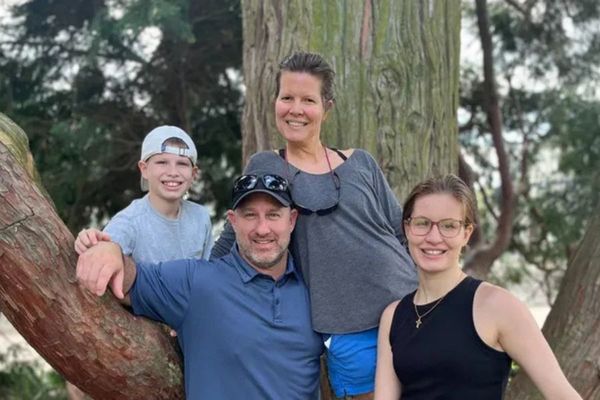Santos's new gas field in the Timor Sea could still produce more carbon dioxide than LNG, even with a proposal for carbon capture and storage, according to a new report.
Since 2004, the Darwin LNG plant has been filled by gas from the Bayu-Undan field, 500 kilometres north-west of Darwin.
With Bayu-Undan's gas reserves running out, Santos plans to backfill Darwin LNG with gas from a new $4.7 billion prospect about 300 kilometres north of Darwin, known as Barossa.
But the gas produced by Barossa contains a very high percentage of carbon dioxide — much higher than any other gas project in Australia.
Santos's huge carbon capture and storage plan
To deal with the huge amounts of CO2 expected to be produced by Barossa and, in turn, meet its goal to have net-zero Scope 1 and 2 emissions (emissions produced by the company and its electricity use but not the users of its products) by 2040, Santos has proposed a massive carbon capture and storage (CCS) scheme.
Santos has put forward plans to capture the CO2 produced from Barossa, pipe it into Darwin, then pipe the gas out to the old Bayu-Undan gas field.
The CO2 will then be pumped deep under the sea floor, with the aim that it will stay underground forever and, as a result, the gas will not contribute to climate change.
However, analysis by John Robert, a chemical engineer and industrial economist with 40 years' experience in the gas industry, found Santos's plans might not reduce Barossa's CO2 emissions at all.
Mr Robert said due to the long distance Santos needed to pipe the gas — around 800 kilometres in total from Barossa to Darwin LNG to Bayu-Undan — it would need to be compressed on several occasions, which would produce large amounts of CO2.
"The emissions are so high, any effort for CO2 storage [CCS] is negated, even before assuming CO2 storage [CCS] actually works," Mr Robert said, in a report for the Institute for Energy Economics and Financial Analysis.
"All up, the amount [of CO2] Santos would be sequestering would be more or less cancelled by the increased combustion emissions."
Santos has claimed the Bayu-Undan reservoir is capable of storing up to 10 million tonnes of CO2 per year — making it one of the largest CCS prospects in the world.
However, the company is yet to make a final investment decision on the project.
But by turning Bayu-Undan into a giant CCS project, Santos will delay the costs of decommissioning the field, which could be up to $US1.1 billion according to online publication Boiling Cold.
Santos did not respond to questions from ABC Rural about its Bayu-Undan CCS proposal.
Mr Robert said there was a risk that, like Australia's largest commercially operational CCS project, Chevron's Gorgon project, Santos would not be able to reach its CCS goals.
"But even if [CCS] is successful, it's still going to be pretty dirty LNG," he said.
"And increasingly that's a risk in the global LNG market … where major customer countries have net-zero by 2050 goals are looking to buy the LNG that has the lowest possible carbon footprint.
"Adding CCS to the Barossa development, in the way Santos apparently favours, would bring little or no reduction in emissions while adding substantial cost, delays and risk."
CCS vital to achieve net-zero goal: Santos
Santos managing director and CEO Kevin Gallagher, speaking this week while announcing a record statutory net profit of $920 million in 2021, said the company was forging ahead with several CCS proposals across Australia.
"De-carbonising natural gas supports the long-term supply of reliable and affordable energy, as well as the production of clean fuels, including hydrogen and ammonia," he told a shareholder presentation.
In October 2021, Mr Gallagher also told a resources conference in Darwin that a CCS project in Bayu Undan could help the viability of developing other new gas projects in the Timor Sea.
Environmentalists want full assessment of CCS proposal
The Bayu-Undan CCS proposal will be assessed by two different bodies: the NT Environment Protection Authority for the pipeline into Darwin harbour and NOPSEMA, the federal offshore regulator, for the rest of the project.
Environment Centre NT's Jason Fowler said the project needed to be examined as a whole, so its overall impacts could be assessed.
"And the government would enforce them to make sure they do the CCS in conjunction with the development with the Barossa field because the Barossa gas is so dirty that we have to have CCS to even think about digging [the gas up]."







